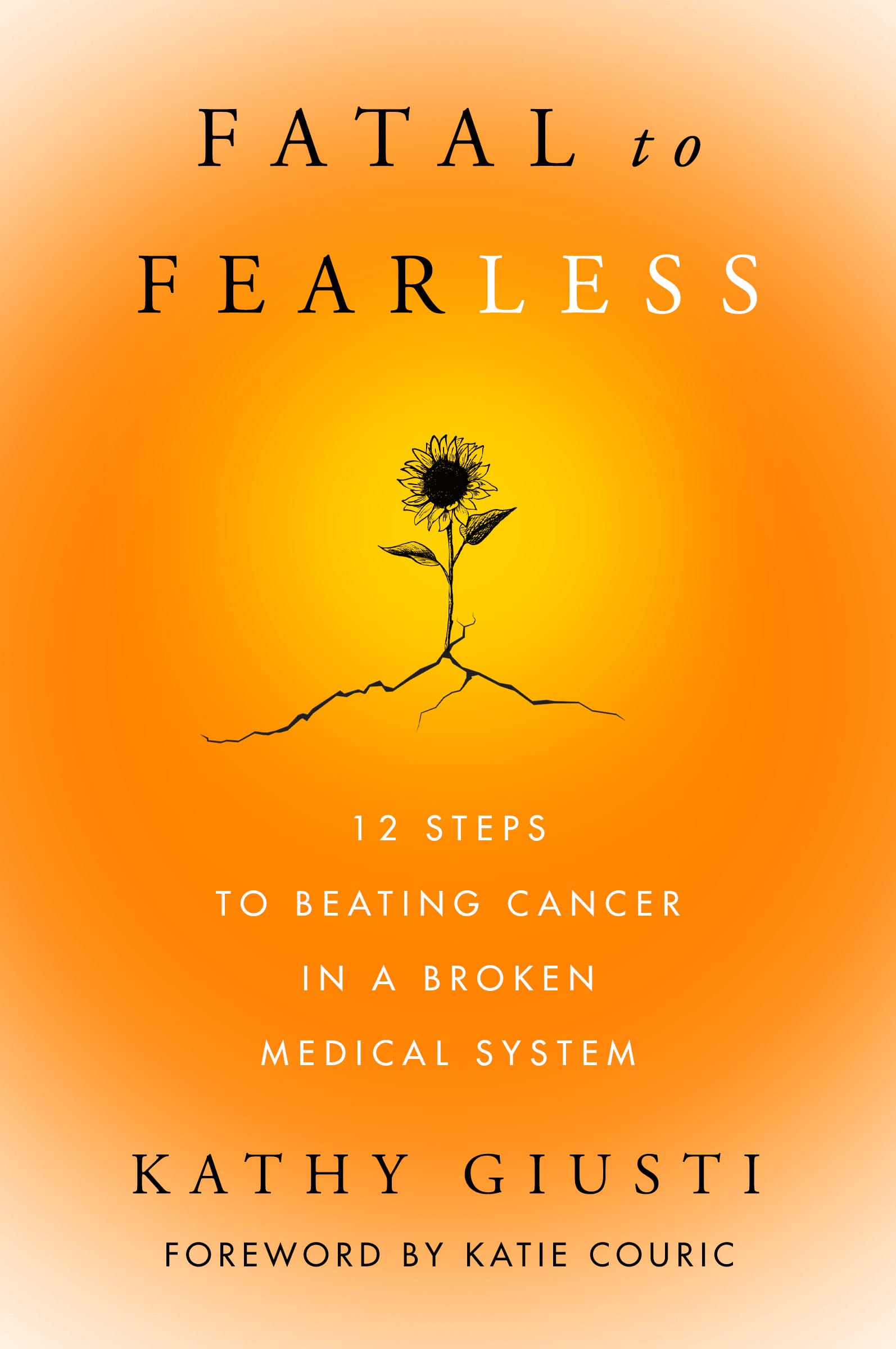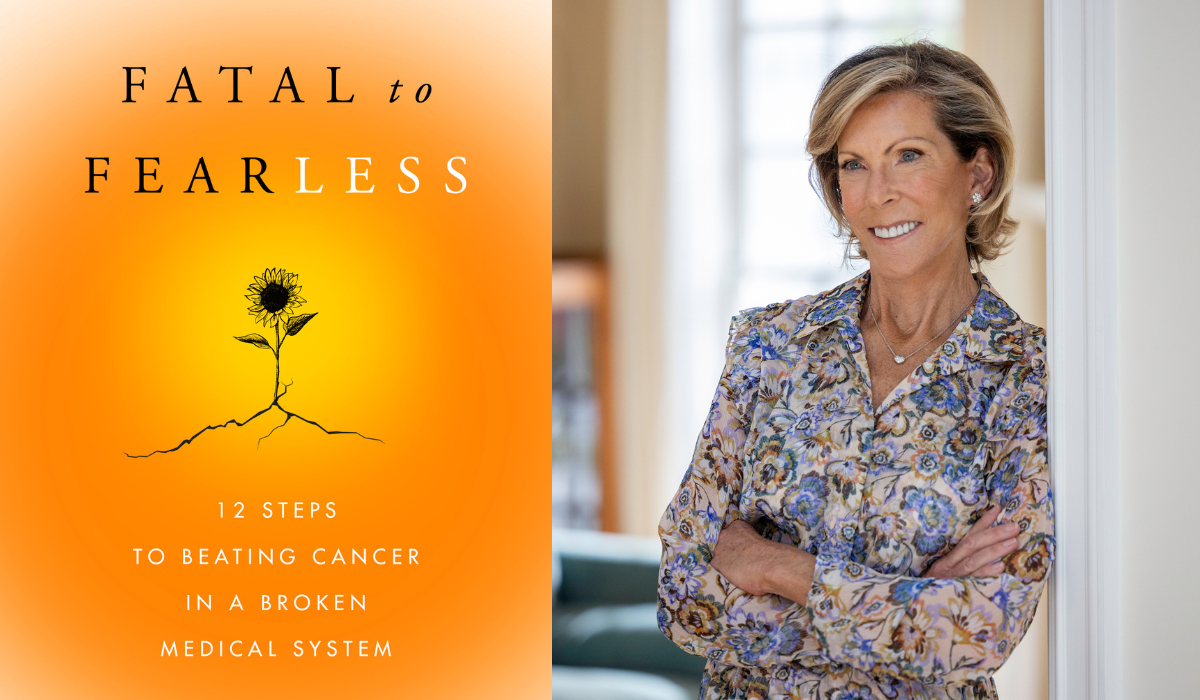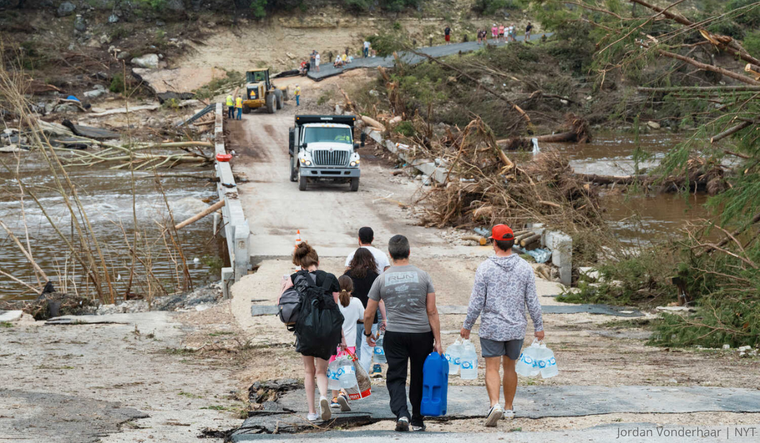From Fatal to Fearless: Two-Time Cancer Survivor Kathy Giusti on How to Navigate Our Broken Medical System
Kathy Giusti will never forget the moment she found out she had multiple myeloma, a cancer of the bone marrow plasma cells, and was told she had three years to live. She was 37 years old at the time, happily decorating a Christmas tree with her husband Paul in their new home, their healthy one-year-old baby girl playing beside them. Giusti “had it all.”
Before she knew it, Giusti was undergoing grueling treatments—induction therapy, chemotherapy, a stem cell transplant, infusions, and countless side effects from these interventions. Then there was a relapse of her multiple myeloma, and years later, a breast cancer diagnosis.
It would’ve been easy for Giusti to go into “Why me?” mode. Instead, she founded the Multiple Myeloma Research Foundation (MMRF), which has raised over $500 million for research and helped develop more than 15 drugs to treat multiple myeloma.
Now in remission thanks to a stem cell transplant from her sister and a combination of new treatments the MMRF helped develop, Giusti is on a mission to share her hard-won wisdom—all of which is in her new book, Fatal to Fearless: 12 Steps to Beating Cancer in a Broken Medical System.
“I beat the odds, but I had to beat the system to do it,” Giusti tells The Sunday Paper. Read on for how she did just that—and for her insightful advice that will help anyone navigating our health care system.
A CONVERSATION WITH KATHY GIUSTI
If you’re diagnosed with a life-changing disease—like cancer, or another chronic illness that needs to be managed—what’s the first step in creating an action plan?
Our medical system is hugely challenged and fragmented, and incredibly hard to navigate. This means that as a patient in today’s world, it really is on you to be the leader of your own health care. You have to become the CEO of your health care, because you’re the one that cares about it the most.
As the CEO of your own health care, it’s up to you to start putting together a plan for your care—and there are a number of factors to keep in mind when you do.
The first step is answering this question: “What does your specific disease look like?” If it’s cancer, you have to look at the data, the available research and guidelines based on that research, and understand where are you in the journey. It could be that you have a type of cancer that you can live a long time with and it is chronic. Or, it could be that you’re like me when I was first diagnosed with myeloma at age 37, and you’re told it’s going to be fatal. I often tell people to plan for the worst and hope for the best because if you do that, your plan is always going to get you there.
Another important part of your plan that not enough people talk about comes into play when you’ve reached an endpoint. Maybe you’ve rung the bell in cancer, which means you’re in remission, or your disease is stable. You need a plan when you reach this stage! This is the point when everyone says, “Great! Let’s get on with life!” But odds are you aren’t going to be ready to do that, because you’re still terrified, and every little twinge you feel makes you feel like your disease is recurring.
You write about the importance of understanding and respecting your caregivers’ needs if you are a patient. What do you want more patients to know about this?
According to a study by the National Cancer Institute, there were 2.8 million cancer caregivers in the U.S. as of 2015, and that number is only growing. These caregivers are typically unpaid family members or friends who have needs, too! It is crucial to create a plan for open and honest communication with your caregivers.
I recommend asking your caregivers about their wants and needs. Know their ability to help, their limitations, and ask them how they can let you know when they get tired and rundown. It’s also crucial to have empathy for your caregivers—they need to know you understand their needs as much as you need them to understand your needs.
It’s also crucial to show your appreciation for your caregivers, whether it’s a hug, a personal note, or a text. Do this all along the way; don’t wait or assume they know how much their support means to you. Show them.
The “fearless” in your book’s title is a double entendre. You write about going from your fatal diagnosis to being fearless, but also learning to fear your disease less. Tell us more…
I was never fearless about my disease, because when it comes to cancer you can never be totally fearless. But if you’ve put a good plan together and you’re monitoring your illness and being transparent with everybody around you, you will come to fear less about your disease.
Where I was fearless was in making decisions about my disease. And being fearless brought me a lot. It not only led to my own cure, but it gave me a second child, my son David, and it drove me to start the MMRF, which led to cures for countless others.
For patients, the point is the more you know, the more you can plan, the less you fear. It’s the uncertainty that creates fear. I want patients to fear less and live more.
Talk about your journey to becoming an activist. You raised half a billion dollars for research after founding the Multiple Myeloma Research Foundation and helped to triple life expectancy for people with myeloma. How did you do this?
Well, I didn’t start out thinking I’d raise half a billion dollars and triple the lifespan of patients. I started out with a goal of wanting to see my daughter get to kindergarten and to at least jumpstart research. At the time, I thought I’d maybe have three years—time to get the research moving and help others and maybe extend my life for a little bit of time. I never expected to take on as much as I did.
But again, I think it’s a testament to creating a plan. As you start to see your plan working, you move to the next plan, and then the next plan, and it starts to build to a point where you’re seeing progress. Then, you realize you can create this tremendous change.
I don’t think everybody has to start a foundation. But I do think there are many things that patients and their loved ones can do.
I always tell people to participate in research—join a clinical trial if you can. Share your data. Share tissue samples. If you’ve been a patient, be a mentor to other patients. There are also so many ways you can get involved with disease foundations and donate your time and expertise.
If you feel called to do something, do it. It’s a wonderful way to surround yourself with purpose.

Kathy Giusti is a two-time cancer survivor, business leader, and healthcare disrupter. Named as one of Time magazine's 100 Most Influential People and Fortune Magazine’s World's 50 Greatest Leaders, Giusti is recognized as a pioneer in precision medicine.
Please note that we may receive affiliate commissions from the sales of linked products.



